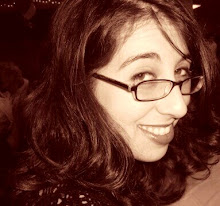1968 brought with it an unknown director named George A. Romero, and a small film titled Night of the Living Dead. Both would bring zombies into the full light of public consideration. For unknown reasons, the recently deceased have risen, and begun attacking and eating the living. The film revolves around a small group of survivors holed up in a farmhouse during the first night of the incident; the power dynamics in this group are fascinating, but just as interesting are the ghouls outside their door. Gone are the biddable, blank-eyed zombis of Voodoo lore: the figures have no apparent goal other than eating the living, and no apparent master but their own instinct. No one knows where they have come from (suggests of a “Venus probe” are bandied about on the television, but no concrete explanation is ever found), when they will leave, or how the world outside may be different in the morning.
As the element of witchcraft evaporated from zombie lore, new details were invented and new fears represented. Rather than being controlled by a ganga, the zombie was now subject only to the force of its own hunger. This made it a more abstract terror, and one more difficult to banish. Rather than confronting a single evil individual, characters were now pitted against a ravenous zombie horde. Their hunger for human flesh may be indicative of anxieties held about the nature of man in years following the optimism of Enlightenment. The l8th-century movement, as it took the first steps towards modern-era beliefs, sought a “total integration of man in nature, with refusal of any transcendence,” eliminating the need for morals which alienated man from his nature (Jones 5). By bending to natural morality, rather than created Judeo-Christian ideals, man might reach a state of perfection and harmony. Ideally,
everything is in response to need—mechanically...like a tree or machine. Man merely carries out natural forces—without any freedom whatsoever—in all he does, whether he loves or hates, helps or hurts, gives life or takes it. (Jones 5)
The zombie is the fulfillment of this ideal. It is simplified to a single drive—hunger—and advances without emotion, fear, fatigue, or sympathy. Being cannibalistic only increases the purity of a zombie’s purpose: humans are all “submitted to the same laws” (5); in this case, natural laws of predator and prey.
Zombies are an incomprehensible force of nature in other ways. By the 1960’s, the control and knowledge promised by scientific advancement (a promise left over from the Enlightenment era of reason) were beginning to flicker. The Space Race of the 1950’s continued, putting man in space by 1961 (Alan Shepherd) and in orbit by 1963 (John Glen) (American Cultural History). As scientists reached further out, it became clear that their understanding did not extend the distance of their designs; even now, a relatively tiny amount is actually understood about outer space. Anxieties about the limitations of science, and specifically space exploration, spurred fascination with zombies—beings that defied all practical scientific explanation—and especially ones which might be caused by a “Venus probe” (Romero 1968).
At the same time that science was stretching out, the landscape of America was shifting as well. After World War II ended, soldiers returned and the country experienced a population boom. The 1950’s brought the birth of suburbia, as World War II veterans returned home to government-aided mortgages outside of cities, and the creation of a viable network of highways (American Cultural History). People were more spread out than they had been in crowded city-centers, traveling longer distances between friends, family, and work. Other effects are implicit in this shift in living. Houses more removed from each other (and from police forces who may be of immediate assistance) “have become defensive: they keep the neighbors out, they conceal, they separate” (Dendle 50). American fears of their own neighborhoods were high. The Gallup Organization began including public opinion questions on crime in the early 1960’s, and found that “between 50 and 60 percent of women were afraid to walk alone at night on streets near their own home” in 1965 and 1972 polls (Bourke 334). This fear was more prevalent in women than men (with under one-fifth of men afraid of the same streets), likely a result of female “powerlessness [being] stroked by media reporting which consistently portrayed women as vulnerable in public places” (Bourke 333). Though women were likelier to alter their behavior in response to this unease, the message was clear to everyone: strangers could not be trusted. The safety of one’s own home was suddenly under question, as their effectiveness as “defenses” were evaluated. Barbra’s choice of fortress does not seem to suggest a positive image of home-as-defense; it holds off the ghouls for some time, but they break in during moments of distraction. Both a stronghold and a strong, attentive guard are needed to survive the anxieties of the 1960s, and Romero’s reinvention of the zombie genre.
Continue reading Part III.

No comments:
Post a Comment